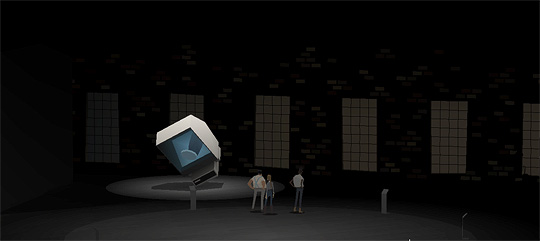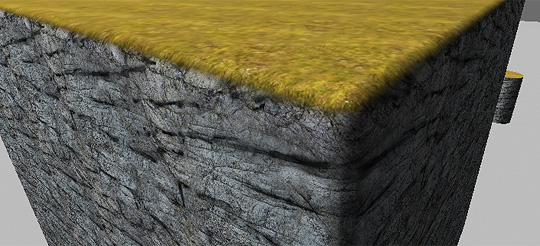To review:
procedural UVs are amazing and you should consider using them in your games. Now,
the old triplanar shader I posted was great at hard-edged cubes, but it didn't handle the transitions between textures very gracefully; curved surface like cylinders and spheres were forbidden.
So I took a look at how James "
@farfarer" O'Hare handled the blending in
his triplanar terrain shader, and how Tom "
@quickfingerz" Jackson grabbed normals in
his own triplanar shader (but the blending in his shader would "blow-out" a lot, I found) and I combined their respective strengths. I also added different handling for top vs. bottom textures, since grass rarely grows on ceilings. (Textures in the shot above are from Farfarer's pack.) One last change: I let Unity's built-in surface struct calculate world normals instead of calculating my own.
So far, I've been unable to get normal maps working with it, so if any enterprising blog readers would like to instruct me how to do it, and share that technique, then I'd be much obliged.
Here's my shader so far. Do what you will with it:
















